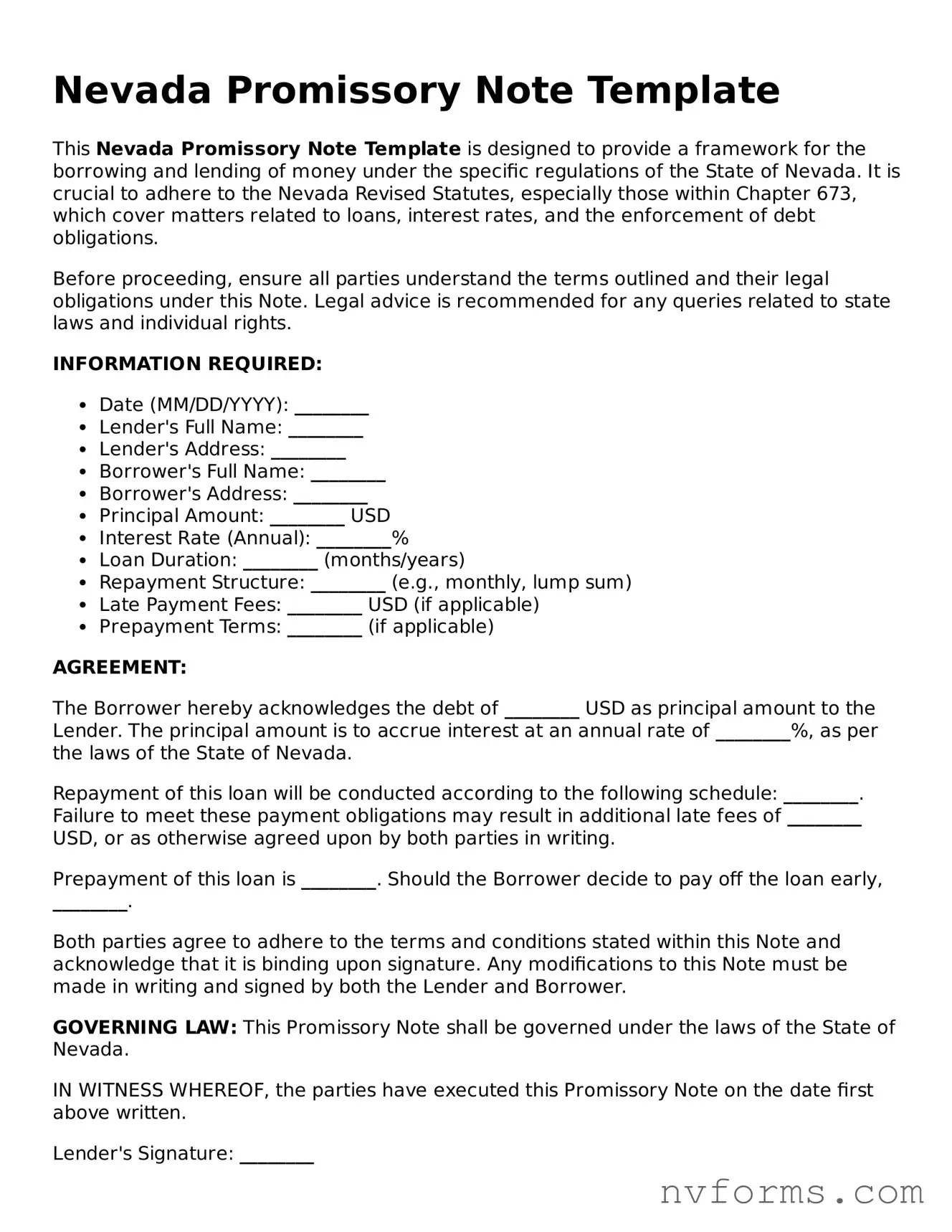Nevada Promissory Note Template
This Nevada Promissory Note Template is designed to provide a framework for the borrowing and lending of money under the specific regulations of the State of Nevada. It is crucial to adhere to the Nevada Revised Statutes, especially those within Chapter 673, which cover matters related to loans, interest rates, and the enforcement of debt obligations.
Before proceeding, ensure all parties understand the terms outlined and their legal obligations under this Note. Legal advice is recommended for any queries related to state laws and individual rights.
INFORMATION REQUIRED:
- Date (MM/DD/YYYY): ________
- Lender's Full Name: ________
- Lender's Address: ________
- Borrower's Full Name: ________
- Borrower's Address: ________
- Principal Amount: ________ USD
- Interest Rate (Annual): ________%
- Loan Duration: ________ (months/years)
- Repayment Structure: ________ (e.g., monthly, lump sum)
- Late Payment Fees: ________ USD (if applicable)
- Prepayment Terms: ________ (if applicable)
AGREEMENT:
The Borrower hereby acknowledges the debt of ________ USD as principal amount to the Lender. The principal amount is to accrue interest at an annual rate of ________%, as per the laws of the State of Nevada.
Repayment of this loan will be conducted according to the following schedule: ________. Failure to meet these payment obligations may result in additional late fees of ________ USD, or as otherwise agreed upon by both parties in writing.
Prepayment of this loan is ________. Should the Borrower decide to pay off the loan early, ________.
Both parties agree to adhere to the terms and conditions stated within this Note and acknowledge that it is binding upon signature. Any modifications to this Note must be made in writing and signed by both the Lender and Borrower.
GOVERNING LAW: This Promissory Note shall be governed under the laws of the State of Nevada.
IN WITNESS WHEREOF, the parties have executed this Promissory Note on the date first above written.
Lender's Signature: ________
Borrower's Signature: ________
Date: ________
